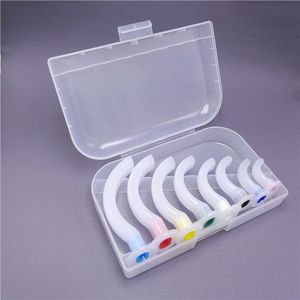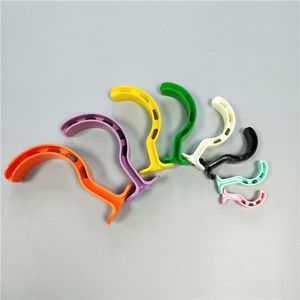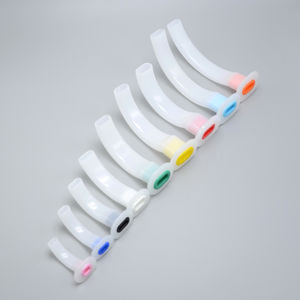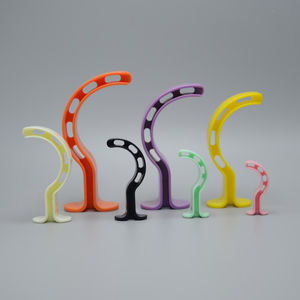
- Primary care
- Emergency medicine, Resuscitation
- Oropharyngeal intubation cannula
- Hangzhou Formed Medical Devices
- Company
- Products
- Catalogs
- News & Trends
- Exhibitions
Suction cannula PA0402 seriesoropharyngeal intubationnasopharyngeal intubationBerman
Add to favorites
Compare this product
Characteristics
- Medical procedure
- suction, oropharyngeal intubation, nasopharyngeal intubation
- Type
- Berman
- Form
- curved
- Options
- disposable, flexible
- Length (mm)
40 mm, 80 mm, 90 mm, 100 mm, 110 mm
(1.6 in, 3.1 in, 3.5 in, 3.9 in, 4.3 in)
Description
The Oral-pharyngeal Airway are usually indicated for unconscious patients because there is a high probability that the device would stimulate a conscious or semi-conscious patient's gag reflex. This could cause the patient to vomit and potentially lead to an obstructed airway. Nasopharyngeal airways are mostly used when the patient has a gag reflex, due to the fact that it can be used on a conscious patient, whereas the oropharyngeal cannot.
Introduction:
Slotted sides permit passage of suction catheters without obstructing the air passage.
Triple-purpose airway serves as a bite block and tongue depressor to avoid crimping and protect teeth.
Smooth rounded tip reduces trauma to upper airway, and the flat surface helps ensure patient comfort.
Features:
Dual channel airway
Semi-rigid, nontoxic polyethylene material
Triple-purpose airway, bite block and tongue depressor
Made of soft coated plastic to avoid crimping and protect teeth
Anatomically curved to contour to the pharynx
The slotted side permits passage of suction catheters to clear secretions from the back of the throat without obstruction the air passage
Smooth, flexible white polyethylene airway with reinforced bite block, to prevent airway collapse
Recommended for single patient use
Latex-Free
Catalogs
No catalogs are available for this product.
See all of Hangzhou Formed Medical Devices‘s catalogsOther Hangzhou Formed Medical Devices products
Oralpharyngeal Airway
Related Searches
- Cannula
- Suction cannula
- Curved cannula
- PVC medical mask
- Endotracheal tube
- Silicone medical mask
- Intubation cannula
- Disposable cannula
- Ambu bag
- Supraglottic airway device
- Oral endotracheal tube
- Injection cannula
- Flexible cannula
- Silicone laryngeal mask
- Manual resuscitator with valve
- Tracheotomy cannula
- Disposable laryngeal mask
- Reusable medical mask
- Manual resuscitator with mask
- Silicone ambu bag
*Prices are pre-tax. They exclude delivery charges and customs duties and do not include additional charges for installation or activation options. Prices are indicative only and may vary by country, with changes to the cost of raw materials and exchange rates.





